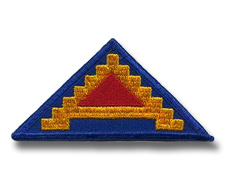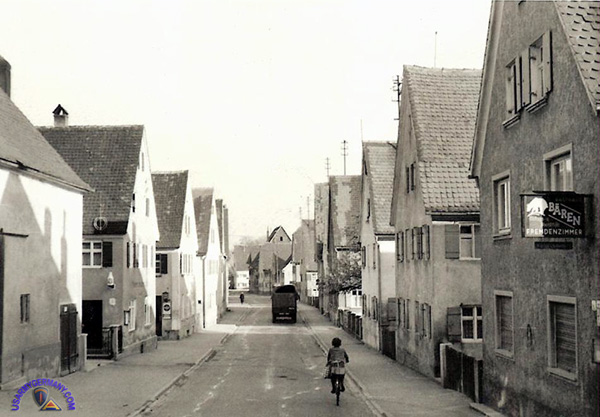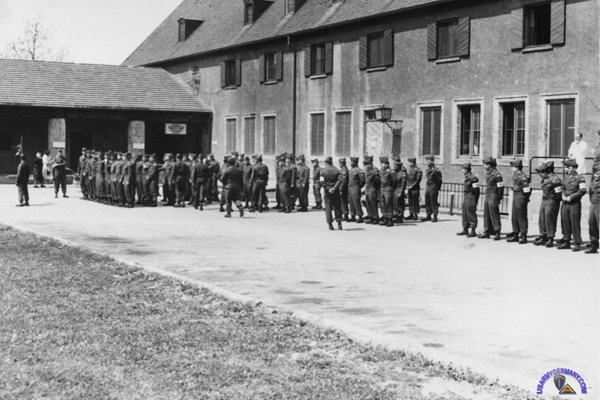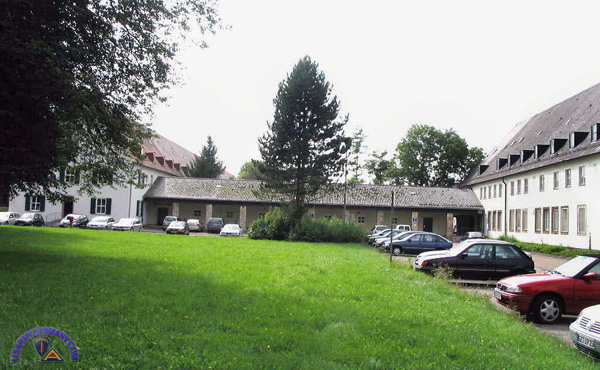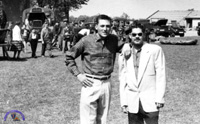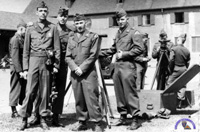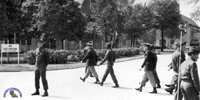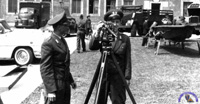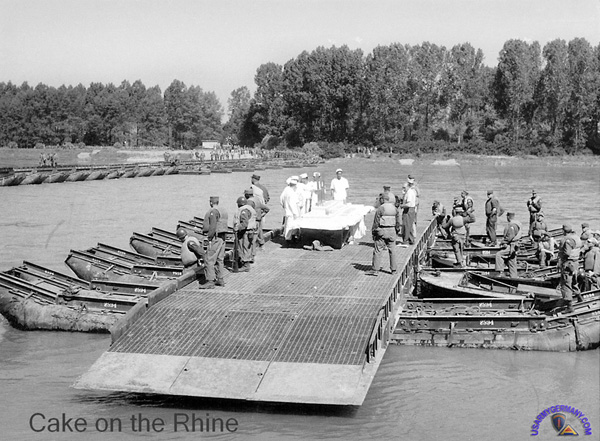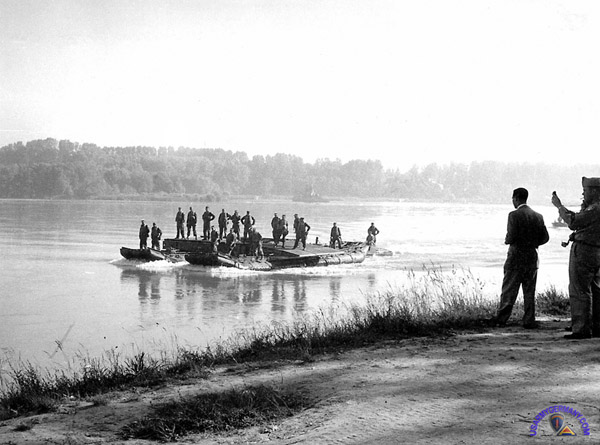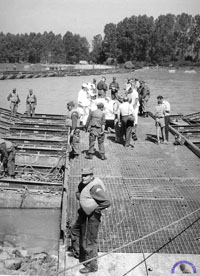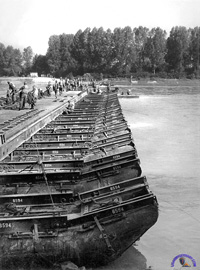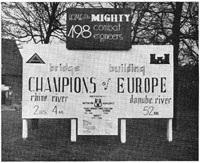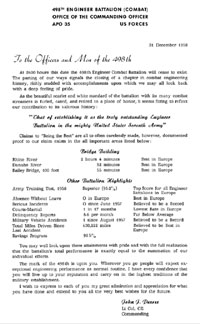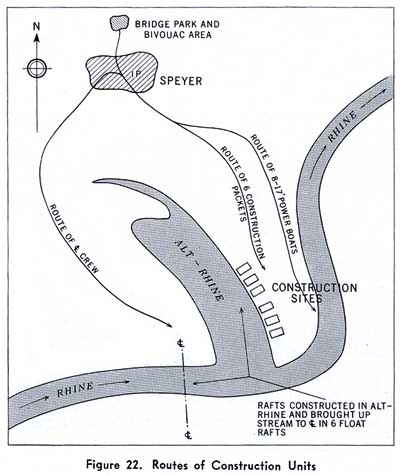| If you do
NOT see the Table of Contents frame to the left of this page, then
Click here to open 'USArmyGermany' frameset |
|||||||||
|
498th
Engineer Battalion |
|||||||||
|
|
|||||||||
|
|||||||||
|
|
|||||||||
| 498th Engineer Bn History | |||||||||
 498th Engineer Bn (Cbt) DUI
498th Engineer Bn (Cbt) DUI |
|||||||||
In early 1957, the 498th Engr Bn CBT arrived in Leipheim, Germany to take the place of the 54th Engr Bn as part of Operation Gyroscope. |
|||||||||
| 1956 | |||||||||
| (Source: Email from Timothy Hoffman) | |||||||||
I was an SP4 assigned to the headquarters unit (498th Engr Bn) from 1956-58 (along with another architect - Milton Scheuermann.
I was fortunate to have my wife (Phyllis) join me in Günsburg where we rented a room from a German family and lived in their house during our time in Germany. Along with my assignment at headquarters, I played in the military band (drums) and Phyllis sang in the church choir. We made the strip maps that were used for all the vehicles when “alerts" were activated. Also, designed a carpet golf course that was installed. I was drafted after college and went to Fort Jackson for a week and then to Fort Benning for basic ... married in December after basic only to be sent to Fort Ord for additional “trainfire” basic training... then gyroed to Leipheim after a seasick week on the ocean with the 498th and the rest is history... Time is growing short for us all but your photos brought back memories … Thank you! |
|||||||||
| (Source: Email from Robert Liljenwall, Co "B" 498th Engr Bn, 1956- ) | |||||||||
| I was in the 498th Engineering Battalion, Company B, Supply clerk....later
joining the gyro unit on June 6, 1956 after boot camp in Ft. Lewis...and
then linked up with 498th at Ft. Order in September....shipped overseas
(however I was on the advance party and flew over). Jim Shypertt and I were close friends for some of the time there...I played in the Jim Hayden Quintet with Gray Cathrall (piano), Jerry Clay (drums), Jim Hayden (lead guitar), Dana ? (guitar), and Bob Liljenwall (bass). I also organized a Kaserne choir which gave concerts in local area. Participated in all of those bridge crossings....they were tough testsl , long days...and were dangerous. Colonel Pearse had a driving ambition to be the best in Europe, and we were! However, in the field, I was in charge of supplies and getting beer at the local brewery. I was assisted by a German national, Adalbert Naujoks, who was drafted in the US Army after graduating from U. of California--Berkeley, and later Thunderbird International (Phoenix)....'Bert's' father was a four-star general in the Germany Army then...and they shipped Bert to NATO headquarters where he served as interpreter to the NATO Commander. I attended University of Maryland Extension....getting 24 units of straight As -- all classes held at the Kaserne, which enabled me to get back into college (BA, San Jose State, 1961)....later getting my MBA, Pepperdine University (1980). I teach at UCLA...am consultant and live near Newport Beach, CA...married with three kids (one in Afghanistan now, 6-06 thru 5-07)....and three grand kids. Enlisting in the US Army changed my life -- all for the better. Jim Shypertt, Gray Cathrall, Alan Brice, and Jerry Clay were all very close friends in 2 1/2 years....had many wonderful times together (some tough times, though, because of the first sergeant we had in our company -- truly one of the more horrible individuals I've ever known in my life -- yeah post this!). The Jim Hayden Quintet played over the Christmas Holidays, 1958, at the General Walker Hotel, Berchtesgaden, (Bavaria)...where we played to the officers and families staying there from 12/26 thru 1/3. Leipheim was a sleepy village...not much there in this farming region...but Guenzburg, a much larger town, was nearby and Ulm was just not far away by train. I joined the Ulm tennis club...and learned to play on clay. And Leipheim, because of its central location in Europe, was a great jumping off point to see/visit all of the Continent. You could see the Danube River from my corner room....had the best view in the Battalion.... |
|||||||||
| If you have more
information on the history or organization of the 498th Engr Bn, please
contact me |
|||||||||
|
|
|||||||||
| 1957 | |||||||||
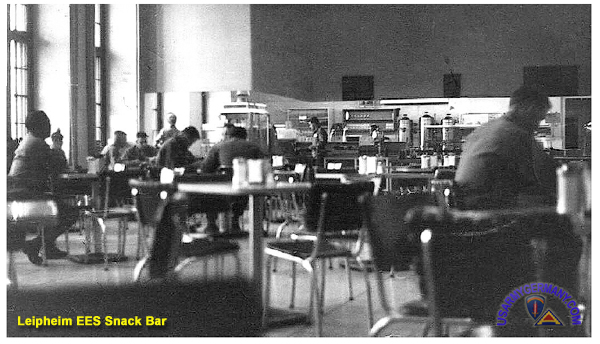 Inside the Leipheim Snack Bar |
|||||||||
|
|||||||||
| 1958 | |||||||||
| (Source: Email from Jim Shypertt) | |||||||||
This past year we have had meetings of a group of men that served in the 498th Combat Engineers. We were stationed in Leipheim under the leadership of Col. John J. Pearse during the battalion's glory years of bridge building, 1958 - 1959.
Because of the Internet we have been able to located more of our former colleagues. |
|||||||||
| 1959 | |||||||||
| (Source: THE MILITARY ENGINEER, Mar-Apr 1959) | |||||||||
| Rhine River Bridging By Lt Col John J. Pearse, CO of the 498th Engr Cbt Bn In the amazingly short time of 2 hours and 4 minutes the 498th Engineer Battalion (Combat) constructed 780 feet of Class 60 Floating Bridge (see figure below) on the Rhine River at Speyer, Germany, on October 12, 1958. This broke the battalion's own previous record of 2 hours and 28 minutes. The organization of equipment and construction crews, and the maximum utilization of the available construction space were the key to success of this operation. |
|||||||||
|
|||||||||
| Men and equipment going to the construction site were made up into six packets, each consisting of a jeep carrying the construction commander, a crane, a 27-foot powerboat, an air compressor, the construction crew, and two bridge trucks, in that order. When these packets hit the site they were ready to bridge and were not dependent upon other elements of the convoy for equipment with which to begin work. All eight 19-foot powerboats were sent from the IP to an unused ferry-slip and launched in 16 minutes. This effected the greatest relief of congestion at the construction site. Center and high-line crews were sent over a third route that reached the river at the bridge center-line. These crews were so well trained and organized that 14 minutes after arrival at the site the high-line was out of the water and waiting for bridge sections. |
|||||||||
|
|||||||||
| (Source: Email from Bob Staffaroni) | |||||||||
| The unit that was the gyro partner with the 54th Engr's was the 498th Engineer Battalion (Combat), the 54th gyroed back to the states (Fort Knox), in April 1957 as your history indicates. The unit that replaced the 54th at Fliegerhorst Kaserne in Leipheim am/Donau in April 1957 was the 498th Engineer Battalion (Combat). The 498th came from Fort Ord, CA. (Hunter Liggett). The 498th Engr Bn was garrisoned at Leipheim from April 1957 until January 1959. The battalion was part of the 540th Engineer Group. The unit was disolved in January 1959 when the army went to the pentomic concept (5 companies per battalion). Companies A and B of the 498th were transferred to the 168th Engineer Battalion (C) at Nellingen Kaserne, Kr. Esslingen. Co A, 498th became Co D of the 168th Engr's, Co. B, 498th became Co. E of the 168th Engrs. The other two 498th Companies, Co C and HHC, were transferred to the 237th Engineer Battalion (C) at Heilbronn. The post at Leipheim was turned over to the German Luftwaffe, however the family quarters area remained there. Leipheim is about half way between Ulm and Augsburg. The 498th Engr's were "the bridging champions of the NATO forces." They held records for the class 60 pontoon bridges on the Rhine at Speyer, Gunzburg, Ingolstadt and Regensburg. Also records for the M4T6 Bulk bridge at Ingolstadt and the Bailey panel bridge of various configuration at various sites. The battalion commander during this time frame was LTC John J. Pearse. The APO for Leipheim Kaserene was 35. Bob Staffaroni |
|||||||||
| Related Links: |
|||||||||
